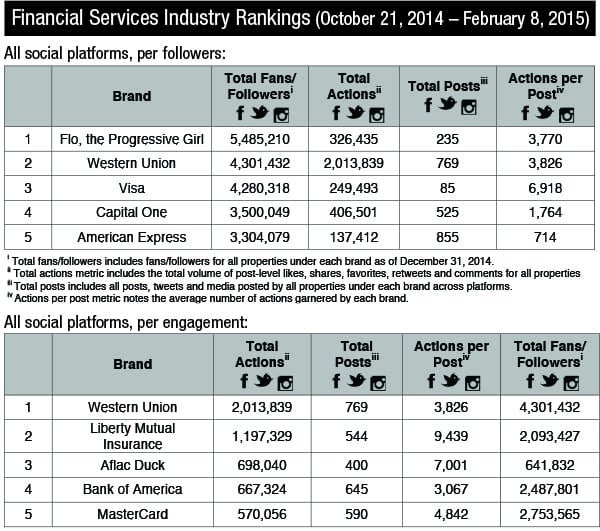Ad budgets devoted to prime-time TV still pack a punch for brands and organizations that can afford that kind of inventory. But in an increasingly social media age, relying too heavily on a paid media strategy may start to resemble the sound of one hand clapping. Not every campaign needs a paid/earned/owned media strategy, of course, but most every marketing effort needs an immersive component that will make the respective audience feel vested in the brand. A familiar refrain from PR managers: It’s all about the experience.
Take the financial services sector, which saw social media engagement grow 6 percent in the fourth quarter of 2014 compared with third quarter of 2014, according to an exclusive study conducted by social media analytics company Shareablee.
“Social media in financial services poses a new communications challenge,” said Tania Yuki, CEO of Shareablee. “While many brands seem to want to focus on the benefits of using their services and subscribing with them, this may not be the goose that lays the golden egg of social media strategies.”
Western Union, for example, decreased the number of postings on its social channels, but overall engagement soared 121 percent. A significant part of its Facebook content stemmed from a paid media strategy.
More important, Western Union also focused on posting content that spurred audience interaction. It asked questions about its audience’s family traditions and encouraged fans to share stories of how the brand has helped them stay in touch with their loved ones.
Aflac employs a similar strategy. It asks questions centered around the brand’s duck character, while MasterCard poses questions to inspire audiences to participate in its #PricelessSurprises campaign. PRN
This article originally appeared in the February 16, 2015 issue of PR News. Read more subscriber-only content by becoming a PR News subscriber today.

